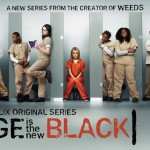My wife and I did not see—and have no plans to see—R.I.P.D., The Lone Ranger, Olympus Has Fallen, and various other big budget movie offerings from 2013. However, not long ago, we sat in the comfort of our basement, which is like a home theater, and watched Noah Baumbach’s latest film, Frances Ha—a buzzed-about 2013 black-and-white American comedy-drama that had a semi-wide theatrical release beginning in May. No cars, skyscrapers, or people were destroyed in Frances Ha, but the scene in which Frances runs/ dances through the New York City streets is one of the best action sequences of the year. Frances Ha didn’t make it to our local Cineplex, but if it had, we’d likely have paid to see it. And we wouldn’t be alone.
Short of Disney and Warner collaborating to produce a Marvel versus DC series that devolves into the Fast and Furious approach of endless self-parodying (in 3D, too!), eventually the current blockbuster trends will die in a violent car crash or nuclear explosion. The signs already indicate that audiences are growing weary of the spate of blockbusters that Hollywood consistently churns out.
Speaking at the University of Southern California in June, Steven Spielberg made headlines when he predicted the collapse of the Hollywood film industry as we currently know it. By his lights, all it would take for the “implosion” is for a handful of $250 million movies to flop at the box office. One reason why a handful of flops could kill the industry is because Hollywood currently relies on a “tentpole strategy” in which a few blockbusters support the entire industry. This past summer’s subpar slate of blockbusters only seemed to legitimate Spielberg’s prophecy. Writing for BusinessWeek, Chelsea Acosta assessed the situation: “[A] row of big budget spectacles have now been categorized as ‘failures,’ meaning they did not recoup at least half their production budget during opening weekend. Those flops include Turbo, After Earth, White House Down, Pacific Rim, The Lone Ranger, and… Elysium. The summer’s biggest flop, R.I.P.D., was produced for $130 million and has so far earned only about $30 million domestically.”
Acosta believes that the real threat to movie-going at theaters is not so much “Hollywood’s tentpole strategy” (though that’s part of it) as it is the rise of the home theater via online streaming options. Online streaming is a threat to DVD sales and rentals, which have long been one of Hollywood’s most significant sources of revenue. Therefore, Acosta asserts, “What Spielberg and other critics are really saying is that there’s going to be an implosion when Netflix and Amazon stop paying high prices for mega-budget movies, and consumers won’t care that they can’t stream them. That’s what’s really going to disrupt the industry… With online streaming, viewers are showing that they are open to a much wider range of fare—especially smaller, independent movies, TV series produced for cable, and documentaries.” While Thor and Captain America are presently available to stream on Netflix, for example, these titles don’t define the average or dominant viewing tendencies for the medium.
It would be too easy—and unfair—to suggest that home theater viewing interests reflect what would or could “succeed” at the movie theater, primarily because viewing context can’t be ignored. Home theater viewers either pay a small monthly fee that they don’t see (Netflix), or agree to a one-time fee that doesn’t involve the exchange of material cash or the physical swipe of a credit card (VOD). They don’t have to leave the comforts of the couch, and if what they’re viewing isn’t working for them, they can immediately find something else to watch. Just because the home theater viewer is interested in Indie movies, sophisticated cable television programming, and documentaries, this doesn’t mean that the viewer is convinced that these smaller-scale experiences are worth having at the local movie theater.
Hollywood’s advertising machine is increasingly less effective at enticing potential moviegoers, because word-of-mouth is increasingly important in our social media age. The latest, greatest trailer might be very accessible, but the first flood of critical and viewer responses to reach Twitter and Facebook are often more important in determining what movies people choose to see. Because the home theater viewer must be especially convinced that a trip to the theater is worthwhile, a film must have at least somewhat positive word-of-mouth from its initial audiences. Disney’s John Carter, for example, is not nearly as bad as word-of-mouth suggested. But it cost a fortune, suffered from an awful advertising campaign, and was deemed a “flop” almost out of the gate. The flop-label stigmatized the film and became something of a self-fulfilling prophecy. Sometimes the established consensus on a film is not so much tied to its quality as it is to its box office results—and, sometimes unjustly, word travels fast that the latter is indicative of the former.
What can Hollywood do about all this? One suggestion is to rearrange the film calendar year. Awards season is the time during the film calendar year when Hollywood pushes relatively smaller-scale films that have more narrative resonance, and to a lesser degree, cinematic achievement. We might dislike the Oscar machine, but it shows that movies can win viewers based on the virtue of a worthy performance, story, or direction.
The kind of films which receive a limited theatrical release earlier in the year—recent examples might include films like Moonrise Kingdom, Beasts of the Southern Wild, Before Midnight—should receive this kind of advertising treatment and theatrical accessibility on a wider scale, and smaller films with the potential to duplicate their success should be green-lit and better supported. This would be to increase year-round attempts to sell audiences on the quality of films produced on modest budgets. People want to see what’s being celebrated. Hollywood knows this; it just needs to quit capitalizing on it with meaningless cut-and-paste one-liners from any critic who says what it wants audiences to hear. We’re growing less likely to be deceived by false advertising.
As a complement to securing better advertising and theatrical release for smaller quality films, Hollywood should have fewer “tentpoles” and gain a more prescient sense of what could function as a tentpole. Major studios throw several $150-plus million dollar blockbuster darts at the board and hope one out of every ten or so hit the bull’s eye. Instead of trying to score a 10 percent ratio of box office success out of a bloated output, the industry ought to make a more concerted effort to raise its averages by having fewer attempts at home runs when it might produce more (and better) singles and doubles. We need fewer blockbusters and better attempts at giving those few to the next director with Christopher Nolan-level talent (think having two or three Rian Johnsons making their Looper each year).
Additionally, the major movie studios need to better sell the uniqueness of the movie theater experience. It might be that of the available technologies being pushed, IMAX is a better option than 3D. IMAX emphasizes rather than enhances the visual experience, and is not likely to be reproduced in future living rooms. Alfonso Cuarón gives me pause with his delightful and stunning achievements in Gravity, but the ratio of unnecessary, distracting, and positively artless uses of 3D to Cuarón’s Gravity or Scorsese’s Hugo or Lee’s Life of Pi suggests a medium struggling to catch on—and even if it does, home theater televisions now come ready with 3D glasses.
A second point, though—perhaps the more important of the two—is to consider how the movie theater context might allure the home theater viewer in a way that’s not reliant on spectacle or technological advancement. The experience of sitting in a dark theater with not only a loved one and/or friends but also a community of strangers bound together by the likeminded human desire to experience what’s set before them isn’t readily reproduced at home. In what ways can movie studios emphasize and enhance the communal experience of a film in a way that doesn’t rely on the latest, greatest spectacular amusement? The home theater facilitates and reinforces experiencing film in isolation, which has its place, but perhaps studios might find unique or time-honored ways to entice the viewer with a sense of participation in the collective experience of a film. And perhaps this participatory sensibility will encourage viewers to move beyond titillation, or the mere expectation that something is going to happen to them (for instance, being “blown away”).
I’ve not yet addressed movie audiences, who don’t always support quality films. But rather than merely respond to recent box office results, movie studios need to recognize their ability to create and form audience expectations. Institutions—including those that make up the film industry—have the unique ability to shape human desire. Those involved in running major movie studios need to think less haphazardly about profitability (which, again, is not to say that they must cease to think about it) and begin to think more strategically and cost-effectively about the human beings who make up the “masses” that they’re trying to make a product for. This institutional capacity to cultivate means that the major movie studios need to get more creative about what human beings might appreciate in a film instead of boorishly and lazily duplicating the latest successes.
Essentially, we need major movie producers with worthwhile vision. This kind of vision consists of four parts. First, visionary moviemaking means truthfully seeing the human situation in its full range—its entire capacity for ugliness, indifference, and goodness. This kind of vision requires a perspectival nuance for character, setting, action, narrative, conflict, and resolution. This vision can and should creatively fit every genre.
Second, visionary moviemaking also means telling stories—even the more ugly and difficult ones— with a characteristic hopefulness that also avoids naiveté. You may read this point and balk at the thought of unbelievable and unearned narrative redemptions. But not all redemption stories have to be cheap, and hopefulness doesn’t always have to inject itself into the narrative situation to be present. Sometimes the director’s handling of a bleak narrative is such a shining light that the sheer encouragement of orientation amidst darkness is reason for great hope.
Third, visionary moviemaking means recovering the very possibilities of film as an art form. Images shape people, and arguably, none are more powerful in this capability than the cinematic. Visionary moviemaking means making meaning with all of the tools that cinema has to offer, but especially through compelling, immersive image composition. Film uniquely presents moviegoers with the opportunity to experience “real presences” in a way that makes the critic George Steiner’s the- sis profound in both form and content: the metaphysical and the moral underlies all art and in such a way that our experience of meaning on this level presupposes the conditional possibility of God’s presence.
Lastly, visionary moviemaking is inf luenced by his- torical and international visionaries. I want to focus on the latter instead of our tendency to be ahistorical, which seems to me self-explanatory. Vision is not gained in a vacuum, but it is formed by outside influences. There is great moviemaking happening around the world, and Hollywood needs to take notice and allow it to shape its vision for the future of film production. It’s a possibility that bodes well for a business model that has long relied upon international audiences to boost its earnings. Imagine if Hollywood cinema presented a vision that was, in unique ways, recognizable to particular international audiences? Achieving this goal overlaps in productive ways with goals one and two by seeking a cinematic vision that is human enough to both include and transcend diverse human cultures.
The visionary moviemaking outlined here certainly exists, but Hollywood must invigorate its influence and reorient its business model to encourage movie audiences to partake in visionary moviemaking. Whether it’s Terrence Malick casting a vision of the universe as a divine gift in The Tree of Lifeor newcomer Sean Durkin exposing the psychological trauma of cult life in Martha Marcy May Marlene, American cinema has produced plenty to boast about in the last few years—some of it noticed by Americans, but most of it not. We need to make our American visionaries noticeable, while also hoping for Hollywood to both take notice and encourage us to better take notice of, for instance, Abbas Kiarstoami’s exploration of love and authenticity in Certified Copy and Like Someone in Love or Asghar Farhadi’s thrilling exploration of domestic drama in A Separation and The Past—to name only a couple of international gems of visionary moviemaking.
Must we do away with the blockbuster action-adventure? Not hardly. But as Andrew Welch put it recently in an essay for To Be [Cont’d], our blockbusters need to recover a sense of intimacy—that quality of humanness that is regularly sacrificed at the altar of mammon. We mustn’t be complicit in this sacrifice if we are to move forward in visionary ways.
In these ways, avoiding Spielberg’s prediction— or effectively responding to its fruition—will require great imagination, vision, self-editing, a human-affirming business model, and collaborative thinking. In other words, saving the future of movie-going will require the stuff of great movies.
















